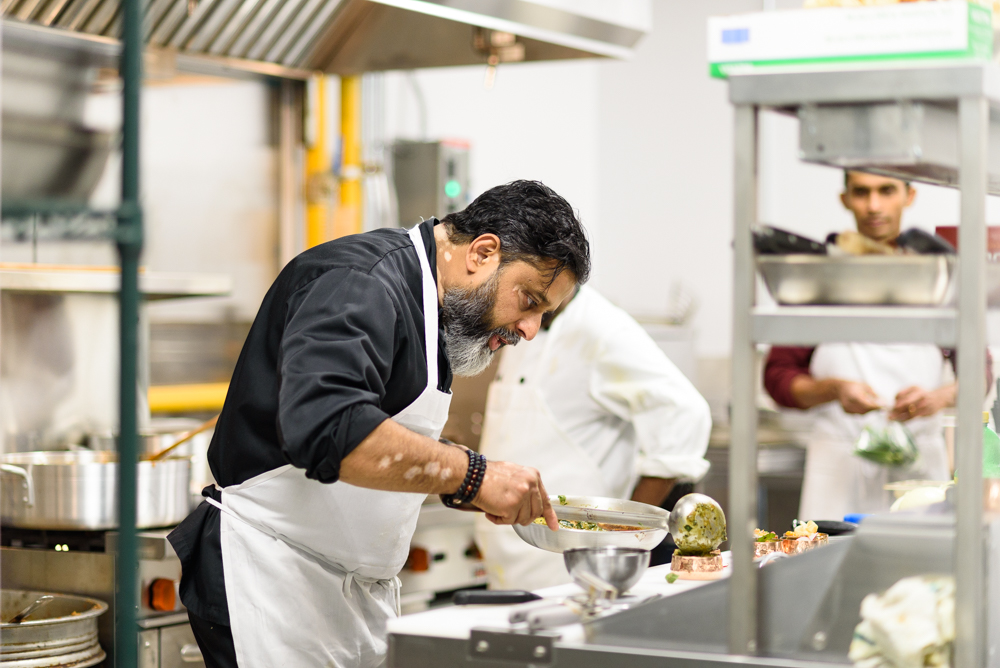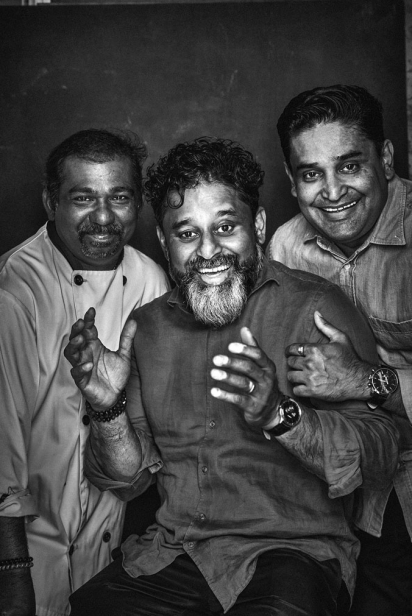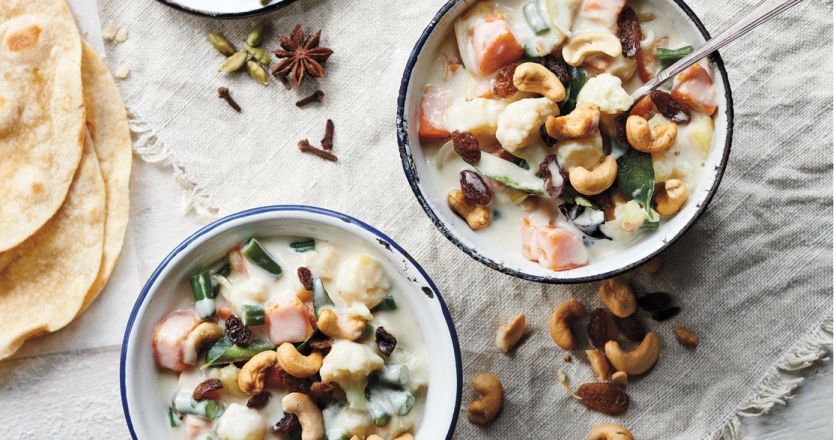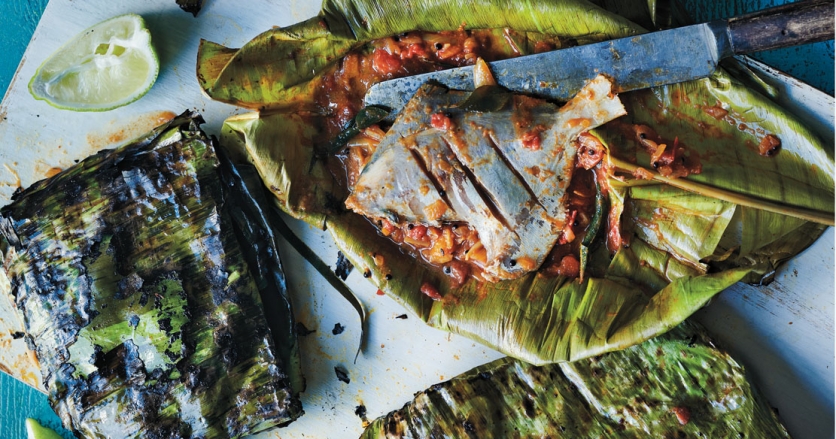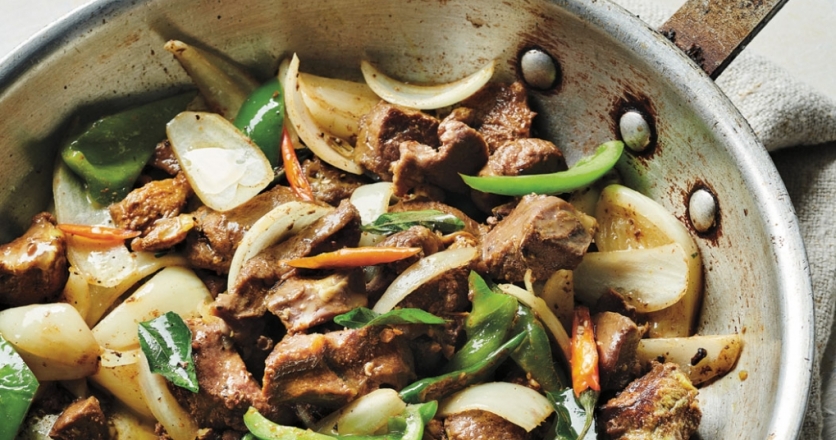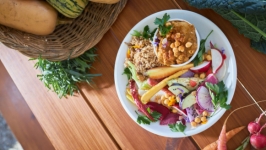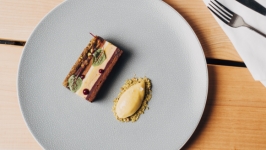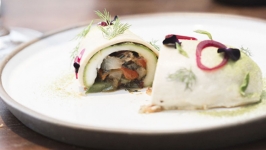Recipes from a South Indian Kitchen
In what has been a roller-coaster-ride of a year for all of us, Joe Thottungal has seen his two restaurants, Coconut Lagoon and Thali, shutdown and open repeatedly with the rolling lockdowns, with the former catching fire and shutting down for the foreseeable future. He's been cooking thousands of meals weekly for Food for Thought, to benefit those in need and his cookbook, named after his original restaurant, Coconut Lagoon: Recipes from a South Indian Kitchen, won gold in the Taste Canada cookbook awards. Almost all of the recipes in that book use ginger. Here Thottungal has shared four recipes that use ginger in different forms — as a paste, slivered, chopped and steeped.
Kerala-style vegetable stew Serves 4
This rustic stew is packed with tender vegetables and flavoured with whole-roasted spices, giving it a real taste of comfort. Feel free to mix up the vegetables — and for an extra treat, garnish with fried onions, cashews and raisins.
½ cup coconut oil
1 to 2 sticks cinnamon, roughly cracked
10 green cardamom pods
10 cloves
1 star anise
5 Indian or Thai green chiles, halved lengthwise
1 (½-inch) piece ginger, peeled and cut into thin matchsticks
4 cloves garlic, thinly sliced
20 curry leaves
1 onion, coarsely chopped 1 teaspoon salt
1 large potato, cut into ½-inch cubes
1 carrot, cut into ½-inch cubes
2 cups coconut milk
1 cup cauliflower florets
½ cup chopped green beans, cut into ½-inch segments
½ cup fresh or frozen peas
1 teaspoon coarsely ground black pepper
Fried onions, for garnish
Heat oil in a large, heavy-bottomed saucepan over medium heat. Add cinnamon, cardamom, cloves and star anise and roast for 1 to 2 minutes, until fragrant. Ad chiles, ginger, garlic and curry leaves and sauté for 1 minute.
Add onions and salt and sauté for 3 minutes, until just softened. Stir in potatoes and carrots. Pour in coconut milk and ½ cup water, cover, and bring to a boil. Reduce heat and simmer for 6 minutes, until vegetables are softened. Add cauliflower, beans and peas and simmer for 2 minutes until just cooked.
Garnish (optional)
2 tablespoons ghee
Handful of raw cashew nuts
Handful of raisins, for garnish
Heat ghee in a small frying pan over medium-high heat, add cashews and raisins and sauté for 1 minute. Set aside.
To serve, sprinkle black pepper and fried onions on top of the stew. Add the cashews and raisins (if using) and serve with appams (optional).
Fish roasted in banana leaf (Meen Pollichathu) Serves 4
This is a traditional way of serving fish in Kerala: A piece of fish is wrapped in banana leaf, which acts like parchment paper to seal in the juices and infuse the fish with their flavour. Source fresh or frozen banana leaves at your Asian grocer or in the frozen section of many supermarkets. Although we typically use kingfish in Kerala, any firm white fish will do — we use tilapia here. If you chose a thicker fish, adjust the cooking time, roughly following the rule of 10 minutes per inch of thickness.
4 (4 to 6-ounces) tilapia fillets
2 tablespoons coconut oil
2 large shallots, finely chopped
1 tablespoon ginger-garlic paste (see recipe below)
1 to 2 Indian or Thai green chiles, halved lengthwise
20 curry leaves
1½ teaspoons ground turmeric
1½ teaspoons red chili powder
1 large ripe tomato, finely chopped
1 teaspoon salt
1½ teaspoons fresh lime juice
½ cup coconut milk
4 banana leaves, wiped clean with damp towel
Matta Rice, Basmati Rice, or Malabar Parathas, to serve
Mango Pickle or Lemon and Date Pickle, to serve
Clean, wash, and pat dry the fish fillets and set aside.
Heat oil in a frying pan over medium-high heat. Add shallots, ginger-garlic paste, chiles and curry leaves and sauté for 2 minutes, until shallots are softened. Add turmeric and chili powder and stir well, cooking for 1 more minute. Add tomatoes and salt and cook for 2 minutes. Stir in lime juice and coconut milk, bring to a boil and cook for 1 minute, until the sauce is thick.
To soften the banana leaves (so they won’t tear when folded), warm them by passing each one over a gas flame (being careful not to scorch them). (Alternatively, warm them a few seconds on each side in a large, dry frying pan over medium- high heat, until they turn shiny and pliable.) Once softened, lay the leaves on a clean work surface.
In the centre of each leaf, spoon a dollop of the masala. Place the fish on top of the masala, then spoon more masala on top of the fish. Fold the leaf to enclose the fish in a neat, sealed parcel: east and west together, then north and south like a rectangular envelope.
Place parcel, fold side down, in a dry frying pan over medium- high heat and cook for 3 minutes. Carefully flip the parcel and cook for another 3 minutes. Set aside for 5 to 10 minutes to rest.
To serve, let your guests unwrap the fish themselves and offer a side plate for the discarded leaves. Serve with rice or bread and pickles.
Ginger-garlic paste Makes ½ cup
A fragrant and essential aromatic in most of our dishes, ginger-garlic paste is pretty simple to make, and a food processor makes easy work of it. While commercial blends are available in jars, they are watery and tend to include preservatives and stabilizers, far inferior to the paste you can make yourself.
1 4-inch piece of ginger, peeled and coarsely chopped 10 cloves garlic
Using a dish towel, pat ginger dry and transfer it to a mini food processor (or use a mortar and pestle).
Add garlic and 2 tablespoons of water and process until smooth, wiping down the sides of the food processor as required. Store in an airtight container in the fridge for up to three days.
Lamb with fennel seeds Serves 4
Coming from households that can’t afford to waste food, we create many of our recipes to deal with leftovers. This flavour-packed stirfry is a classic example of that. It gives new life and kick to yesterday’s roast lamb, when you toss the cooked meat with fragrant spices, notably the licorice scent of fennel. The trick is to start with tender chunks of lamb. Here, we’ve provided a recipe for fresh lamb, but if you are using leftover cooked lamb, you can simply skip straight to sautéing. Serve this dry dish with something saucy, like a dal curry. And because lamb loves lemon, we serve it with a bowl of lemon rice.
1 pound boneless leg of lamb or lamb shoulder, cut into cubes
1 tablespoon ground coriander
1½ teaspoons red chili powder
1½ teaspoons salt (divided)
½ teaspoon coarsely ground black pepper
¼ teaspoon ground turmeric
2 tablespoons vegetable oil
3 cloves garlic, chopped
1 tablespoon chopped ginger
1 onion, cut into thick slices
1 green bell pepper, seeded, deveined and cut lengthwise into wedges
2 Indian or Thai green chiles, halved lengthwise
12 curry leaves
1½ tablespoons fennel seeds
1 tablespoon ground fennel
1 teaspoon fresh lemon juice
In a large saucepan, combine lamb, coriander, chili powder, 1 teaspoon salt, pepper and turmeric. Add 4 cups water and bring to a boil. Reduce heat to medium-low, cover and simmer for 30 to 35 minutes. Drain lamb and reserve the cooking liquid.
Heat oil in the same saucepan over medium-high heat. Add garlic, ginger, onions, bell peppers, chiles, curry leaves, fennel seeds and remaining ½ teaspoon of salt and sauté for 1 to 2 minutes, until fragrant. Add lamb and ½ cup of cooking liquid (or water), increase heat and sauté for 5 minutes, stirring well, until all the liquid has evaporated.
Finish with ground fennel and lemon juice. Serve with rice.
Cardamom chai Serves 4
The comforting scent of my mother's chai wafting through our home, greeting my brothers and me after school, is one I treasure. Cardamom must dominate the flavour, so we use both seeds and pods, crushing them lightly and infusing the tea leaves with their gentle perfume. In India, we like our chai sweet, and we tend to boil the tea leaves with a lot of sugar.
And by the way, chai means "tea." To order "chai tea" is redundant, like saying "I'll have tea tea." If you learn only one thing from this cookbook excerpt, learn that! Chai is chai.
1½ tablespoons loose-leaf black tea
Sugar, to taste (optional)
4 green cardamom pods, crushed in a mortar and pestle
1 ½-inch piece ginger, peeled and coarsely chopped
2 cups milk
Bring 2 cups of water to boil in a small saucepan. Add tea leaves, sugar (if you like it sweet), crushed cardamom pods and ginger and boil for 2 minutes to release the flavours. Pour in milk and bring back to a boil. Simmer for another two minutes.
Strain tea, then pour it from one jug to another, to create a froth, in turn creating a lighter tea. Serves hot.


